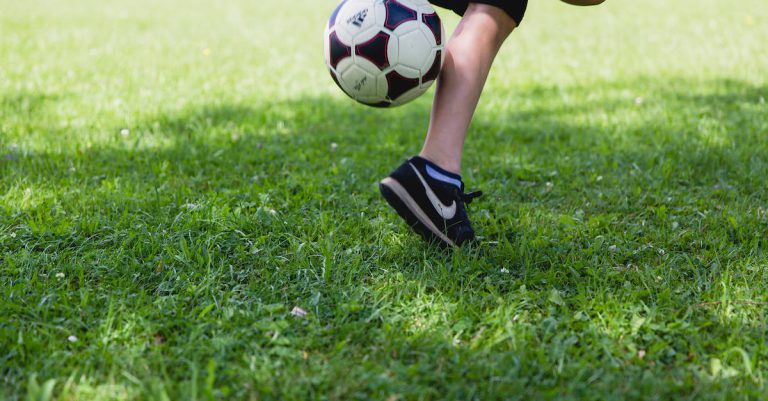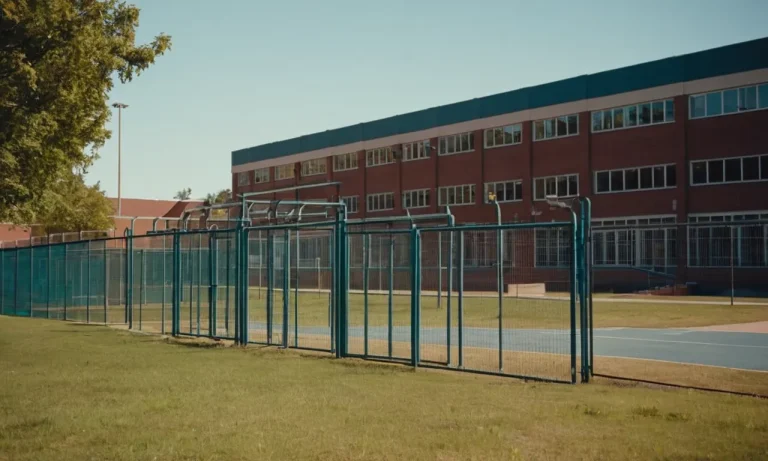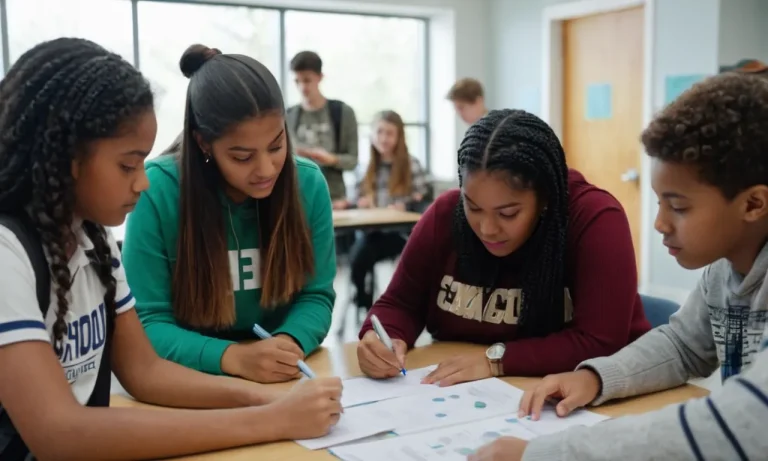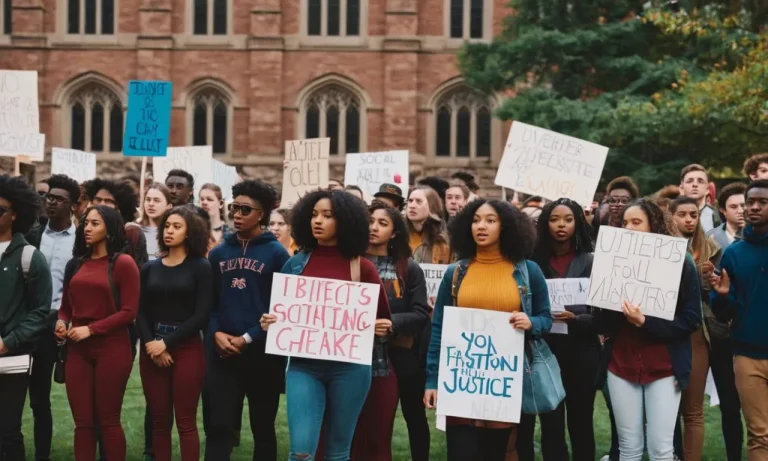In the harsh reality of school life, bullying has become a prevalent issue that affects countless students worldwide. However, sometimes the tables turn, and the victim decides to fight back, leading to a situation where a kid beats up a bully at school.
If you’re short on time, here’s a quick answer to your question: A kid beating up a bully at school is a complex situation that can arise from various factors, including self-defense, retaliation, or a momentary lapse in judgment.
While violence should never be condoned, understanding the circumstances and addressing the root causes of bullying is crucial.
In this comprehensive article, we will delve into the intricate details surrounding a kid beating up a bully at school. We will explore the potential reasons behind such an incident, the legal implications, and the long-term consequences for both parties involved.
Additionally, we will provide valuable insights and strategies for preventing bullying and promoting a safer, more inclusive school environment.
Understanding the Dynamics of Bullying
What is Bullying?
Bullying is a form of aggressive behavior that involves intentional and repeated actions aimed at harming, intimidating, or oppressing another person or group. It can take many forms, including physical, verbal, social, or cyber bullying.
According to StopBullying.gov, a federal government website managed by the U.S. Department of Health and Human Services, bullying is defined as “unwanted, aggressive behavior among school-aged children that involves a real or perceived power imbalance.”
This power imbalance can stem from various factors, such as physical strength, social status, or access to information.
Types of Bullying
Bullying can manifest in different ways, and it’s important to recognize the various forms it can take:
- Physical Bullying: This involves harmful physical actions, such as hitting, kicking, pushing, or damaging someone’s belongings.
- Verbal Bullying: This includes name-calling, teasing, taunting, or making threats.
- Social Bullying: This involves spreading rumors, intentionally excluding someone from a group, or public humiliation.
- Cyberbullying: This refers to bullying that takes place through electronic means, such as social media, text messages, or online forums. According to a study by the Cyberbullying Research Center, over 36% of students reported experiencing cyberbullying in their lifetime.
Psychological Impact on Victims
Bullying can have severe and long-lasting psychological effects on victims. It can lead to anxiety, depression, low self-esteem, and even suicidal thoughts or actions. According to a report by PACER’s National Bullying Prevention Center, victims of bullying are more likely to experience mental health issues, academic difficulties, and social isolation.
😔 The impact of bullying can extend beyond the victim and affect their family, friends, and overall well-being.
It’s crucial to address bullying proactively and create a safe and supportive environment for all students. By understanding the dynamics of bullying, we can better recognize the signs and take appropriate measures to prevent and address this harmful behavior.
Remember, bullying is never acceptable, and everyone deserves to feel safe and respected. 👏
Reasons Why a Kid Might Beat Up a Bully
Self-Defense
One of the primary reasons why a kid might resort to physical violence against a bully is self-defense. When a child feels threatened, intimidated, or physically harmed by a bully, they may choose to fight back as a means of protecting themselves.
According to a study by the StopBullying.gov initiative, approximately 20% of students report being bullied at school. In such situations, the child may feel that retaliation is the only way to stop the bully’s behavior and prevent further harm.
However, it’s crucial to teach kids non-violent conflict resolution strategies and to seek help from school authorities or trusted adults.
Retaliation and Revenge
Sometimes, a child may choose to beat up a bully as a form of retaliation or revenge. After enduring prolonged bullying, the victim may reach a breaking point and decide to take matters into their own hands. This can be fueled by anger, frustration, and a desire for justice or retribution.
According to a study by the Centers for Disease Control and Prevention, approximately 19% of high school students reported being bullied on school property. While understandable, retaliation often leads to a cycle of violence and escalates the situation further.
It’s important to address the root causes of bullying and provide support for both the victim and the bully.
Peer Pressure and Bystander Effect
Peer pressure and the bystander effect can also play a role in a kid’s decision to beat up a bully. Children may feel pressured by their peers to act tough or stand up to a bully, even if they don’t personally have a conflict with that individual.
The bystander effect, where witnesses fail to intervene or seek help, can embolden bullies and make victims feel isolated. According to a study by the StopBullying.gov initiative, over 70% of students have witnessed bullying in their schools.
It’s crucial to educate kids about the importance of standing up for others, seeking help from trusted adults, and fostering a culture of kindness and empathy.
Underlying Mental Health Issues
In some cases, a kid’s decision to beat up a bully may stem from underlying mental health issues or emotional disturbances. Children who struggle with anger management, impulse control, or trauma-related disorders may be more prone to lashing out violently.
According to the National Institute of Mental Health, approximately 1 in 5 children in the U.S. experience a mental health disorder. It’s crucial for parents, teachers, and healthcare professionals to identify and address these issues early on, providing appropriate support and interventions to prevent escalation of violence.
Counseling, therapy, and positive coping strategies can help kids manage their emotions and resolve conflicts in a healthy manner.
Legal Implications and Consequences
When a kid beats up a bully at school, it’s a serious matter with potential legal consequences that shouldn’t be taken lightly. While standing up against bullying is understandable, the law doesn’t condone using physical violence as a solution. Here’s what you need to know:
School Policies and Disciplinary Actions
Most schools have a zero-tolerance policy towards violence and fighting on campus. According to StopBullying.gov, a government website dedicated to preventing and addressing bullying, schools are required to have clear disciplinary procedures in place for incidents involving violence or bullying.
Depending on the severity of the altercation, the students involved could face consequences ranging from suspension to expulsion. Schools may also involve law enforcement in severe cases.
Potential Criminal Charges
In some cases, a fight at school could lead to criminal charges, especially if the incident resulted in severe injuries or property damage. According to FindLaw, an online legal resource, assault and battery charges are common in cases of physical altercations.
The severity of the charges depends on factors like the extent of injuries, the use of weapons, and the age of the parties involved. If charged, minors may face consequences through the juvenile justice system.
Civil Liabilities and Lawsuits
Apart from criminal charges, there’s also the possibility of civil liabilities and lawsuits. According to Education Week, a respected education publication, parents of the injured party may file a civil lawsuit against the aggressor’s family for damages, medical expenses, and emotional distress.
Schools and school districts can also face lawsuits if they’re found to be negligent in preventing or responding to the incident.
Addressing the Issue: Prevention and Intervention Strategies
Bullying in schools is a complex issue that requires a multi-faceted approach. By promoting a positive school climate, implementing anti-bullying programs, encouraging bystander intervention, and providing support and counseling, we can create a safe and inclusive environment for all students.
Promoting a Positive School Climate
A positive school climate is the foundation for preventing bullying. It involves fostering a culture of respect, empathy, and inclusivity. Schools can achieve this by:
- Establishing clear rules and expectations for student behavior
- Providing training for teachers and staff on recognizing and addressing bullying
- Encouraging open communication and building trust between students, parents, and educators
According to the StopBullying.gov website, “A positive school climate helps prevent bullying by promoting respect, empathy, and a sense of community.”
Implementing Anti-Bullying Programs
Evidence-based anti-bullying programs can be highly effective in reducing bullying incidents. These programs often involve:
- Classroom lessons on bullying prevention and conflict resolution
- Peer-led initiatives to promote kindness and inclusivity
- Training for teachers and staff on recognizing and responding to bullying
The Pacer Center offers several resources and programs to help schools address bullying, including their “Student Action Plan Against Bullying” program.
Encouraging Bystander Intervention
Bystanders play a crucial role in preventing and stopping bullying incidents. By empowering students to stand up for their peers and report bullying, we can create a culture of accountability and support. Schools can:
- Teach students safe and effective ways to intervene when they witness bullying
- Provide anonymous reporting systems for students to report bullying incidents
- Recognize and celebrate students who demonstrate upstander behavior
According to a study by StopBullying.gov, “When bystanders intervene, bullying stops within 10 seconds 57% of the time.” 👏
Providing Support and Counseling
Both victims and perpetrators of bullying may need support and counseling to address the underlying issues and develop healthy coping mechanisms. Schools should:
- Offer counseling services and support groups for students affected by bullying
- Provide training for counselors and mental health professionals on addressing bullying
- Collaborate with community organizations and mental health professionals to provide additional resources
The National Association of School Psychologists offers guidance and resources for schools on supporting students affected by bullying and creating a positive school climate.
By implementing a comprehensive approach that addresses prevention, intervention, and support, we can create a safer and more inclusive environment for all students. Remember, every student deserves to feel safe, respected, and valued in their school community. 😊
Conclusion
The issue of a kid beating up a bully at school is a complex and multifaceted problem that requires a comprehensive approach. While violence should never be condoned, it is crucial to understand the underlying factors that may lead to such incidents, including self-defense, retaliation, or mental health issues.
By promoting a positive school climate, implementing effective anti-bullying programs, encouraging bystander intervention, and providing support and counseling, schools can create a safer and more inclusive environment for all students.
Additionally, addressing the root causes of bullying through education, awareness, and open communication can help prevent future incidents and foster a culture of respect and empathy.






